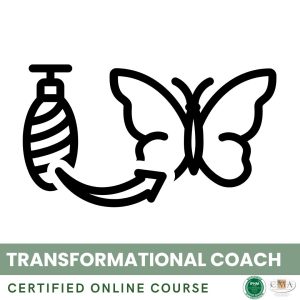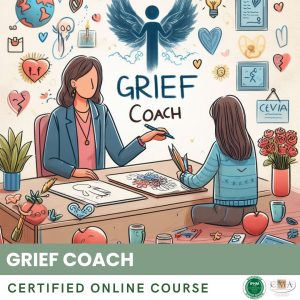Integration of Trauma and Post-Trauma
The process of integrating traumatic experiences is a crucial aspect of healing, allowing one to move from a state of survival to a full, embodied life. It involves gradually transforming past injuries into resources for the present and future, giving them meaning and placing them within one’s personal history.
One of the keys to integration is the ability to develop a coherent narrative of the traumatic event. In the early stages after the shock, memories are often fragmented, disorganized, invaded by intense emotions and disconcerting physical sensations. Therapeutic work will gradually connect these fragments into an integrated narrative, which puts the experience in context and gives it meaning.
Sophie, a rape victim, was long haunted by intrusive flashbacks of the assault, unable to talk about it in a structured way. During her EMDR therapy, she gradually revisited the traumatic scene and incorporated the different sensations, emotions, and thoughts associated with it. Little by little, a coherent narrative emerged, allowing her to repossess her story and not feel defined solely by that event.
Another essential aspect of integration is reconnecting to one’s body and sensations. As we saw in the sub-module on Somatic Experiencing, trauma often leaves deep imprints on the body, in the form of chronic tensions, areas of numbness, or hyper-reactivity. Bodywork will gradually unblock these somatic knots and restore a sense of safety and vitality to the body.
During an intuitive dance workshop, Laura, a victim of domestic violence, initially felt great resistance to moving freely. By connecting with her breath and allowing minimal movements, she gradually reinvested in her pelvis and stomach, areas long locked by fear. Over the course of the sessions, she rediscovered the joy of dancing and expressing her emotions through her body, a crucial step in her integration process.
Integration also involves working on beliefs and cognitive patterns arising from the trauma. Experiences of violence or abuse often challenge fundamental beliefs in a just and secure world, in the goodness of others and in one’s self-worth. Cognitive restructuring work, as proposed in cognitive-behavioral therapies, will identify and gradually transform these limiting beliefs.
After being a victim of incest in her childhood, Julie long carried the deep conviction of being dirty and bad. In therapy, she gradually questioned this belief by exploring evidence of her worth and innocence. She realized that the shame and guilt she carried were not her own, but were the result of her assailant’s manipulation. By integrating a fairer and compassionate view of herself, Julie made a pivotal milestone in her healing process.
Beyond healing wounds, integration also paves the way for genuine post-traumatic growth. Many people who have gone through extreme experiences report lasting positive changes in their lives, such as a greater appreciation of existence, deeper relationships, clarified priorities, and heightened spiritual awareness. This growth does not erase the suffering experienced, but gives it meaning and direction.
After coming close to death during the Bataclan attacks, Camille endured months of distress and questioning. By committing to therapy and a quest for meaning, she gradually transformed her trauma into a force for life and commitment. She trained in victim support and now invests in awareness and prevention actions. Her painful experience has become a driver to contribute to a fairer and more empathetic world.
Within the framework of Divine Feminine Healing, trauma integration takes on a sacred and archetypal dimension. It is about transmuting the wound into initiation, drawing on the resources of various facets of femininity. The inner Warrior provides the strength to stand up to adversity; the Sage offers discernment to make sense of the experience; the Lover infuses gentleness to heal the soul’s wounds; the Wild renews resilience and instinctive vitality.
During a healing ritual, Sophia was invited to share her story of sexual violence in the center of a circle of women. Each participant in turn mirrored a quality they saw in her: her courage, her determination, her gentleness, her creativity… Over the course of the shares, Sophia felt her burden lighten and a new self-image emerged, integrating the resources of her various facets. The ritual concluded with a collective dance celebrating her rebirth, her transition from victim to initiate, from injured woman to healed and inspiring woman.
In summary, trauma integration is a gradual and multi-dimensional process, engaging the entirety of the being – body, heart, mind, and soul. It is about gradually turning wounds into resources, leaning on verbal and somatic therapeutic approaches, as well as the power of archetypes and rituals. By patiently journeying on this healing path, daring to look at one’s shadows to better connect to one’s light, the woman can transmute her painful history into a path of awakening and contribution to the world. The survivor then becomes a “thriver”, a woman who flourishes and shines far beyond her past. By healing her intimate wounds, she contributes to the healing of the sacred feminine and all humanity.
Key takeaways:
– Trauma integration transforms past injuries into resources for the present and future, giving them a place in one’s personal history.
– Developing a coherent narrative of the traumatic event is key to integration, linking the fragmented memories into a narration that places the experience in its context.
– Reconnection to one’s body and sensations is essential, unlocking somatic knots related to the trauma to restore a feeling of safety and vitality.
– Integration also involves working on beliefs and cognitive patterns arising from the trauma, to transform limiting convictions into a fairer and kinder view of oneself and the world.
– Beyond healing, integration paves the way for post-traumatic growth, turning the painful experience into a source of meaning, commitment, and contribution to the world.
– In Divine Feminine Healing, integration gives a sacred dimension by drawing on the resources of female archetypes (Warrior, Sage, Lover, Wild).
– Trauma integration is a gradual, multi-dimensional process that engages body, heart, mind, and soul, transforming the wounded woman into a blooming woman who radiates her healing.
👉 To download docx (Editable) file click here : Click here
👉 To download PDF file click here : Click here
👉 To download MP3 file click here : Click here






